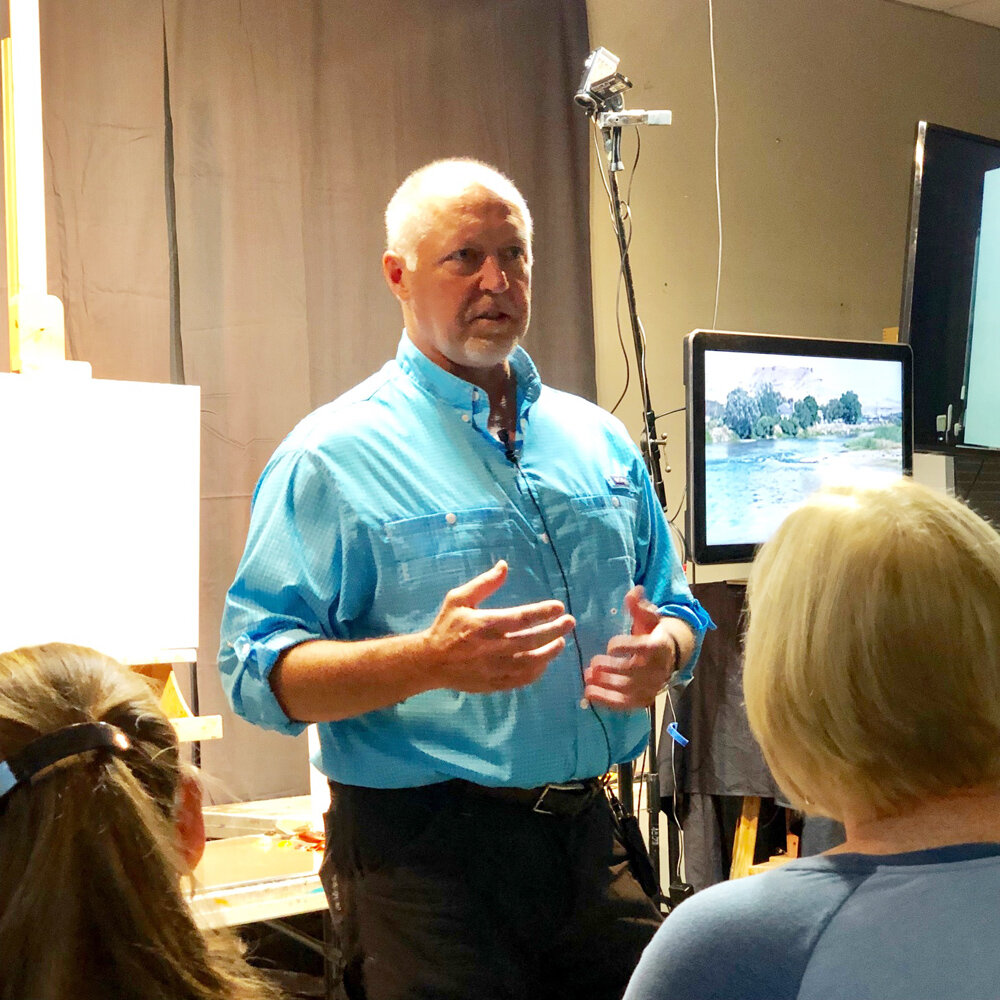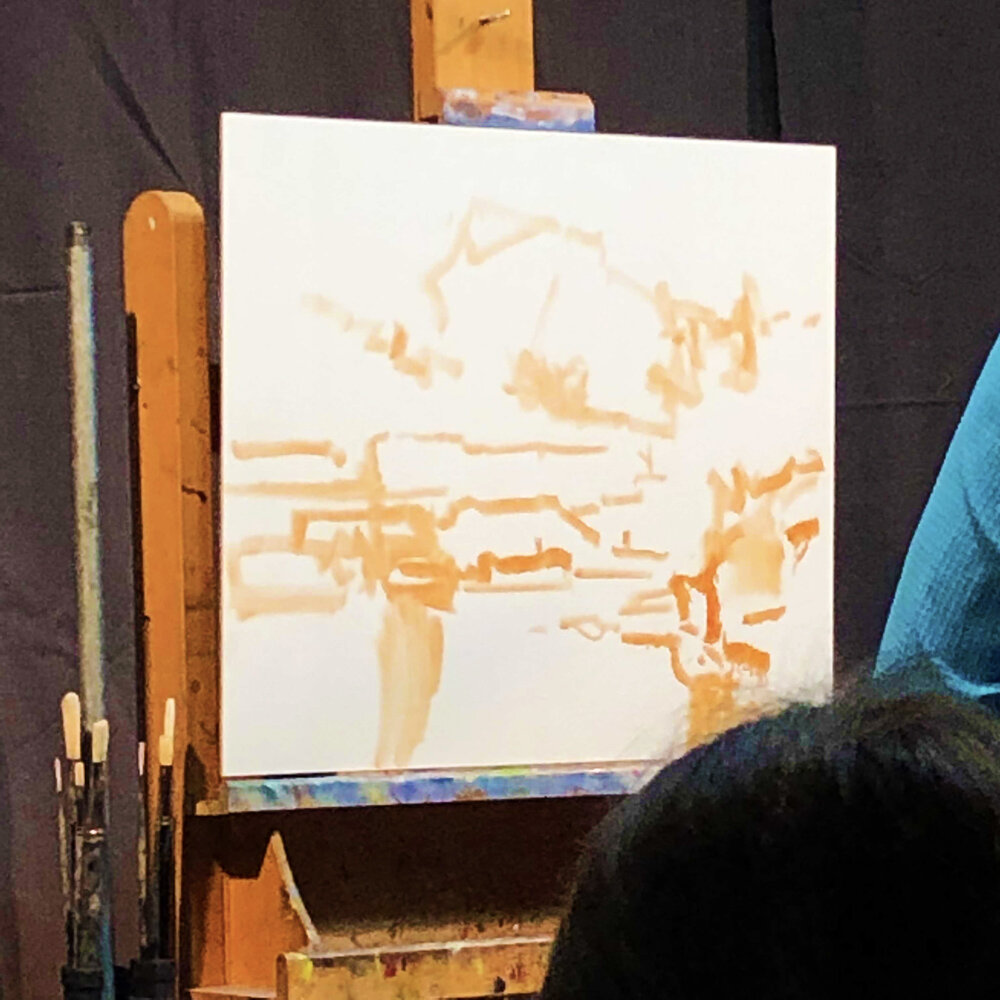Making and Keeping New Year's Resolutions
9 of the 22 finished paintings I completed in 2019.
Like many of you, I started on my New Year’s resolutions yesterday. So far, so good!
I’m kidding of course, but I do think it is possible to keep your New Year’s resolutions, the key is just to make them simple from the get go. Its even better if it is a small daily habit that when compounded over time makes a big difference in your life.
Mine are the following:
1) Do not go more than 24 hours without doing studio work
2) Sketch everyday
3) Work out 5xs a week
I started out with a much longer list initially, but when I really dug down deep to the “why” behind most of my resolutions, it became obvious to me that what was driving them was one main idea: that I want to live a long, healthy and prolific life. So I cut out anything that did not directly support that goal. These 3 resolutions made the cut because they all support my why and they are simple enough to do.
Do you have any resolutions or strategies that you would like to share? I would love to hear them!
One last thing, I have to share this funny poll I took on Instagram on the topic. Not sure what this says about the ambition of my followers on IG, but it certainly gave me a laugh!
Have a great 2020 everyone!
Workshop Wednesday: Scott L. Christensen
Scott L. Christensen 3 hour demo.
Artist, Scott L. Christensen speaking to a packed room of workshop attendees.
A special workshop just wrapped up last week at Zoll Studio School of Fine Arts in Timmonium MD. Reknown landscape painter Scott L. Christensen shared with a group of very lucky students his process and personal development as an artist during a 3 hour demo. I was one of the eager fans in attendance.
I am sharing with you here the notes and photos I took during his demo (with permission of the artist). I take copious notes during any workshop/demo I attend because I am a visual learner and it helps me to retain information better that I receive verbally (i.e., in a lecture) and also because I can revisit my notes later during my study time. Self directed learning is something I apparently have in common with Christensen who credits daily studying as one of the keys to his success.
ON THE VALUE OF STUDYING:
-Don’t try to make good paintings when doing plein air. Paint to study, to get information. Worry about the painting itself later.
-”I would rather do volume when working outside then try to wrestle a painting to the ground (by over rendering)”.
-”When you study outdoors you have to sacrifice something. Decide what the focus of your study will be.”
-He limits his palette when making studies.
-He studies for hours outdoors everyday. It is part of his regular working practice.
-”Study paintings and take them apart”. When going to museums, he often takes detail shots of paintings that he admires that have a good solution on how to paint a rock, a tree, etc. He then turns the photos into black and white and studies them more closely to see how that artist achieved that specific effect with value, form, composition… whatever information he is seeking.
-”Ask yourself why the Master did things? They did things for a reason. Figure out why”.
-He has done a lot of studying on Sargent and more recently, Fechin.
-”Study what it is that you like about an artist, and what you don’t”.
NOTES ON CHRISTENSEN’S PROCESS AND SUGGESTIONS ON PAINTING::
-Begins by writing in his notebook, trying to define the scene in front of him with words. He asks himself questions like; What is drawing him to this scene? Is it light? Color, etc? What compositional elements can he build upon? He then settles on something from this enquiry that he wants to explore further, and makes that the theme of the painting.
-He often starts exploring ideas by working on craft paper or drawing in his journal.
-The next step is to distill the composition down initially into “10 lines” on the blank canvas. In the demo he used just transparent red oxide and paint thinner for this step. The idea being to simplify and develop all the elements of the painting at the same time. He is after unity of subject here. Christensen says that “connectivity of things is one of the hardest things to paint”. He believes that connectivity/unity of composition is much more important than rendering a specific tree or rock perfectly.
While making his 10 marks he asks himself:
”What is different with this space compared to that space?”
”Where is my variety”
“Should I add a cloud here for tension?”
“Think connecting points and tension areas (where your eye draws to)”
Some of the beginning “10 marks”.
The entire “10 mark” composition mapped out.
-When working from reference or life, don’t allow the photo or scene in front of you to decide the placement of things. “You decide the composition”.
-He looks for “unequal distribution of shapes and scale” in his compositions. Too many shapes at similar sizes is not interesting.
-”All the detail in the world can take place AFTER you have your design down”.
-While traveling he has started using gouache. He did 100 gouache paintings in one month recently but feels that is not enough time to really know the medium.
-He preferes to paint to music.
-His palette consists of the following Vasari paints (partial list):
Cobalt, Ultramarine Blue, Kings Blue, Video Blue, Yellow Deep, Permanent Red, Ruby Violet, Transp. Red Oxide, Thalo Green, Chromium Oxide green (which he uses less often) and the Vasari neutrals that he developed with the Vasari Paint Company, “Color and Light” set.
-When mixing color he starts with one of his neutral greys and then adds a color hue into that say Bice and Cobalt blue.
-His philosophy on color is based on p. 88 of Carlson’s Guide to Landscape Painting book which reads, “good color has infinite varieties, a reserve.”
Christensen’s palette. Notice how he efficiently groups values together.
Here Christensen is beginning to lay in some of his color notes. You can see him altering his blue values as he searches for the right relationship between the water and the sky.
-He begins his paintings with brushes of all sizes (including a 2 inch brush for blending water for instance) and will then switch to palette knives after he has locked in the design and is seeking more impasto.
-Reminds us that Sargent stayed in the mid-tones most of the time. He added his darks only at the end. ”Staying in the mid-tones adds unity to a painting”.
-Quotes Carlson, “its the juncture (of values) that require thought”.
-Reminds us that a specific value can appear differently when surrounded by lights and when surrounded by darks. Keeping this is mind will help with the simplification of values.
-”Keep it all in tone. Every note must be in harmony”.
-"Put in determined value, not half value, not “sneaking up on it” value”.
-”Try to go out & do relationship painting. Try to figure out those things instead of trying to paint the perfect tree”.
-”I am big on experimenting with most of my painting”.
-Moves specific temperatures (colors) around the painting by adding it in a new area- but always alters value appropriately first.
-”Sometimes I will completely change the season of a painting”.
-Will recompose a painting as he goes along if needed “I might put something in and the take it out dozens of times”.
-”It doesn’t take long to lose a painting if you (mindlessly) just pat color down for 2 mins”. Be intentional.
-Uses a mirror once his painting is established to check for corrections.
”Landscape (painting) is learning to put parts together more than anything else”.
SOME THOUGHTS ON THE STRUCTURE OF CLOUDS:
-Clouds get warmer at the core.
-Value & temperature changes make something turn.
-The yellow in a cloud will turn to orange and then red as it recedes.
Christensen’s finished painting with palette.
Christensen’s finished 3 hour demo.
“Be willing to sacrifice your paintings to get something better overall.
Be willing to make them ugly, then fight to make them better”












